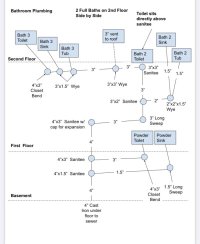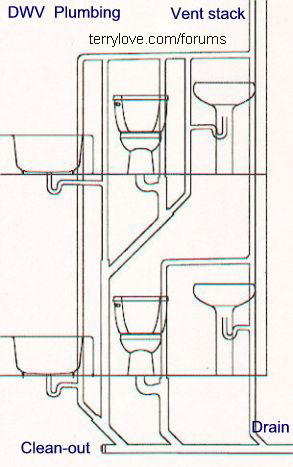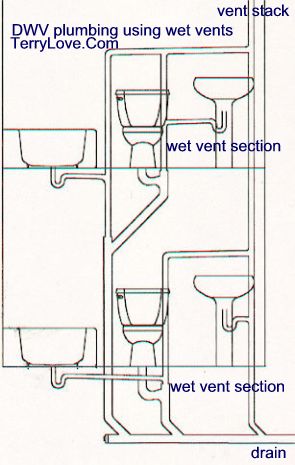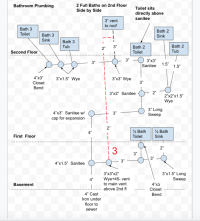Tudorrenovator
Member
Working on a 100 year old home, have removed the cast iron and am replacing with PVC. I am limited by the existing structure hence some of the quirks.
There are 2 full baths on the second floor, side by side, on a 3” line with a 3” vent in the middle going to the roof. All the fixtures are venting though the 3” drain line. Can I wet vent both bathrooms on the 3” horizontal using the 3” roof vent?
Also, there is a powder room on the first floor below, with the toilet and sink going separately to the 4” main stack in the basement. Will those vent ok through the 3” roof vent?
There are 2 full baths on the second floor, side by side, on a 3” line with a 3” vent in the middle going to the roof. All the fixtures are venting though the 3” drain line. Can I wet vent both bathrooms on the 3” horizontal using the 3” roof vent?
Also, there is a powder room on the first floor below, with the toilet and sink going separately to the 4” main stack in the basement. Will those vent ok through the 3” roof vent?





